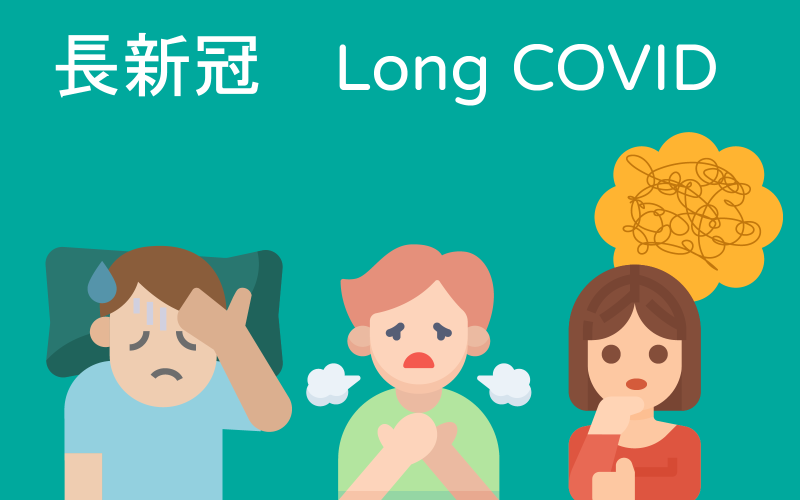
Every hour, one person dies from diabetes
In Taiwan, the prevalence of diabetes among individuals aged 18 and above is 11.8%, with approximately 2.27 million people affected by diabetes nationwide. Diabetes ranked as the fifth leading cause of death among Taiwanese individuals in 2016, with a mortality rate of 42.4 deaths per 100,000 people. This equates to approximately 1 person dying from diabetes every hour.
Why do people get diabetes?
Insulin is a hormone that helps transport glucose from the blood into cells, providing energy for cellular functions. Using an analogy, we can imagine glucose as lychee fruit, insulin as a palace maid, and cells as the imperial concubine. The imperial concubine cannot go to the market to buy lychees by herself, so the palace maid is responsible for bringing the lychees to the imperial concubine for consumption.

If the imperial concubine (cellular tissue) is constantly fed a large amount of lychee fruit (glucose), not only will she become tired of eating it, but her figure will also gradually become plump.
After a while, when she sees the palace maid (insulin) bringing more lychee fruit, she feels nauseous (insulin resistance).

The emperor sees the treasury filled with lychee fruit and assumes that there is a shortage of palace maids (insulin) to handle the task of carrying the lychee fruit. Worried that the imperial concubine might go hungry, he recruits more palace maids (insulin) to transport the lychee fruit to the palace. However, no matter how many palace maids or lychee fruit there are in the palace, the imperial concubine simply doesn’t want to eat. Occasionally, she reluctantly swallows one or two. As a result, despite the abundance of palace maids and lychee fruit, the imperial concubine becomes increasingly emaciated (the body tissues are unable to absorb energy).
Why can’t glucose enter the cells and stay in the blood?
Insufficient insulin supply in the body:
When there is insufficient insulin supply in the body, glucose cannot be utilized by cells through insulin, resulting in its accumulation in the bloodstream, leading to persistently high blood sugar levels. Type 1 diabetes occurs when the immune system attacks pancreatic cells, leading to insufficient insulin secretion.
Insulin resistance:
Insulin resistance refers to abnormal cellular utilization of insulin, where insulin cannot effectively metabolize glucose, causing it to remain in the bloodstream, and the kidneys are unable to fully reabsorb it, leading to its presence in the urine.
As cells are unable to obtain sufficient energy, the body assumes that it should produce more insulin to transport glucose. Thus, it continuously produces insulin day and night. However, the problem is that cells have already become less responsive to insulin, so they still cannot acquire enough energy. As a result, the body experiences rapid weight loss.
About 90% of diabetes cases are caused by insulin resistance. The causes of insulin resistance can be related to excessive fat, genetics, and older age.
Diabetes symptoms

- The “Three Poly and One Little” warning signs of diabetes include:
- Polyphagia (increased hunger): Feeling hungry and eating more than usual.
- Polydipsia (increased thirst): Feeling excessively thirsty and drinking more fluids.
- Polyuria (increased urination): Urinating more frequently, including waking up at night to urinate.
- Unexplained weight loss: Losing weight without trying.
In addition to these signs, diabetes may also present with the following symptoms:
- Fatigue and weakness, numbness or tingling in the limbs
- Itchy skin and genital area
- Declining vision
- Decreased immune function, skin problems, and slow wound healing
However, in the early stages of diabetes, there are often no symptoms, and nearly one-third of people are unaware that they have the condition. Therefore, regular health check-ups are necessary to detect diabetes early.
Why do people with diabetes eat and drink a lot and still feel hungry and thirsty?
Diabetic patients may feel hungry even if they eat a large amount of food because the cells do not respond well to insulin, preventing glucose from being utilized by the cells.
Additionally, the presence of sugar in the urine leads to osmotic diuresis. When urine volume increases abnormally, the body loses water at an accelerated rate, resulting in thirst. Therefore, if blood glucose levels do not decrease, the sensation of thirst will persist.
High-Risk Groups for Diabetes
Diabetes, apart from being related to genetic factors, is also greatly influenced by lifestyle. Taking a closer look at the following high-risk groups, which factors can be avoided in everyday life?

Smoking, alcohol consumption:
Nicotine in cigarettes inhibits insulin secretion, leading to elevated blood sugar levels. Drinking alcohol on an empty stomach can cause hypoglycemia, while consuming alcohol after a meal increases the risk of high blood sugar.
History of gestational diabetes:
Women with a history of gestational diabetes have a 15% to 50% chance of developing type 2 diabetes in the future.
Stress:
Prolonged high-stress levels can disrupt hormone secretion, impair insulin function, and increase the risk of elevated blood sugar.
Family history:
Having a family history of diabetes increases the chances of developing diabetes compared to the general population.
Age over 40:
This is a common age range for the onset of type 2 diabetes.
Hypertension, hyperlipidemia:
A preference for a high-salt and high-fat diet, consuming excessive amounts of meat and fish, can lead to decreased levels of high-density lipoprotein cholesterol (HDL-C) and increased levels of low-density lipoprotein cholesterol (LDL-C), resulting in conditions such as hypertension, hyperlipidemia, and potentially diabetes.
Overweight/obesity, lack of exercise:
Obesity reduces the body’s ability to utilize insulin (insulin resistance), leading to increased blood sugar levels.
Four types of diabetes

Type 1 diabetes:
Type 1 diabetes originates from an abnormal immune system response, where antibodies start attacking the pancreatic beta cells responsible for producing insulin, leading to either insufficient or no insulin secretion.
Type 1 diabetes typically develops in individuals under the age of 30 and is believed to result from a combination of genetic and environmental factors. The number of patients is relatively small (less than 5% of the total diabetic population), and they often experience prominent symptoms such as weight loss, polyuria (excessive urination), increased thirst, and a lean body type. Long-term insulin administration is necessary to manage the condition.
Type 2 diabetes:
Over 90% of diabetes cases are classified as type 2 diabetes. Patients often do not exhibit symptoms in the early stages of the disease and may only become aware of their condition when experiencing changes in their body or complications associated with diabetes.
Type 2 diabetes has a hereditary component and typically affects individuals over the age of 40, often accompanied by obesity as an external characteristic.
Poor lifestyle habits, such as excessive alcohol consumption, smoking, lack of physical activity, and a preference for a high-calorie diet, contribute to insulin resistance or reduced insulin secretion in type 2 diabetes. Besides insulin administration or medication, lifestyle modifications are necessary to control the condition.
Gestational diabetes:
Approximately 5% of women experience temporary symptoms of diabetes during pregnancy due to hormonal changes that create insulin resistance in cells. However, the symptoms typically disappear after childbirth.
It is important to note that if a mother develops gestational diabetes during pregnancy and does not receive proper treatment, it indirectly increases the risk of the fetus experiencing high blood sugar levels, leading to an increased likelihood of congenital malformations, stillbirth, or macrosomia (large-for-gestational-age infants).
Women who have had gestational diabetes have a 15% to 50% chance of developing type 2 diabetes in the future. If gestational diabetes was previously diagnosed, regular blood glucose monitoring is recommended after delivery.
Other causes:
There are also rare cases of diabetes caused by pancreatic disorders, endocrine disorders, medication, and other factors.
What happens with prediabetes?
If any of the following criteria are met, a doctor would diagnose diabetes:
- Glycated hemoglobin (HbA1c) level greater than or equal to 6.5%
- Fasting plasma glucose level greater than or equal to 126 mg/dL (measured after at least 8 hours of fasting)
- Oral glucose tolerance test with a plasma glucose level greater than or equal to 200 mg/dL at 2 hours
- Presence of hyperglycemia symptoms (polyuria, polydipsia, polyphagia) along with a random plasma glucose level greater than or equal to 200 mg/dL
| normal | prediabetes | diabetes | |
| fasting blood sugar | 60-100 mg/dL | 100-125 mg/dL | >=126 mg/dL |
| glycated hemoglobin(HbA1c) | 4-5.6% | 5.7-6.4% | >=6.5% |
| Two-hour oral glucose tolerance test | <140 mg/dL | 140-199 mg/dL | >=200 mg/dL |
Prediabetes
Prediabetes refers to a condition in which blood glucose levels are consistently between normal values and diabetes. Prediabetes typically does not have obvious symptoms, but if not actively controlled, it can easily progress to diabetes.
How to Detect Type 1 and Type 2 Diabetes
If someone is diagnosed with type 1 diabetes, which is characterized by an immune system dysfunction, they may have positive reactions for antibodies such as ICA (Islet Cell Antibodies), Anti-GAD65 (Anti-Glutamic Acid Decarboxylase 65), and ICA 512 antibodies. These antibody reactions are specific to type 1 diabetes and are not typically present in type 2 diabetes.
How to Test for Gestational Diabetes
Regarding gestational diabetes, which is associated with pregnant women, doctors will perform blood sugar tests during the first prenatal check-up after pregnancy and between weeks 24 and 28. The testing methods include fasting blood sugar levels and an oral glucose tolerance test. If the results exceed the normal range, it indicates the presence of gestational diabetes.
Diabetes treatment
The treatment methods for diabetes may vary depending on the specific situation. For individuals with type 1 diabetes, the current treatment approach involves long-term insulin injections to control the condition.
As for individuals with type 2 diabetes and gestational diabetes, in addition to insulin injections, oral medications can also be used to improve the symptoms and manage the condition.
Is it safe to give insulin?
Following the instructions of doctors and pharmacists and administering insulin injections as prescribed is generally safe. Moreover, the current pen-type insulin injectors are convenient to use and cause minimal discomfort.
In Taiwan, many individuals with type 2 diabetes tend to avoid insulin injections because they believe that using insulin signifies poor disease control or consider it as a last resort treatment with no other options available afterward. However, both of these notions are misconceptions. Insulin injections are a more effective and less burdensome approach, and they are not reserved only for advanced stages of the disease. Insulin can be used at any stage, and doctors will develop a treatment plan based on what is most beneficial for the patient, with the goal of effectively controlling blood sugar levels and preventing complications.
Insulin analog
Insulin analogs are modified versions of insulin that alter its biological and physicochemical characteristics, making it more suitable for human needs.
Also known as mealtime insulin or rapid-acting insulin, they have a shorter onset time and can be injected approximately 15 minutes before or after a meal. Due to their shorter duration of action in lowering blood glucose levels, they can reduce the risk of hypoglycemia.
Taking diabetes medication
The timing for taking diabetes medications varies. Some medications need to be taken with meals or after meals, while others need to be taken before meals. There are also medications that should be taken on an empty stomach. It is important to follow the instructions of your doctor and pharmacist regarding the timing of medication administration in order to effectively control and stabilize your blood sugar levels. Adhering to their instructions will help ensure proper management of your condition.
How to prevent diabetes?
Diet
-
-
- Focus on a “low oil, low salt, low sugar, high fiber” diet.
- Avoid overeating and reduce consumption of high-cholesterol foods (such as animal organs), processed foods, and sugary foods.
- Avoid cooking methods that involve high oil content, such as frying and deep-frying.
- Use vegetable oils instead of animal fats.
- Limit consumption of sugary beverages, and opt for plain water as the best choice.
- Quit smoking and limit alcohol intake.
-
ACtion
Regularly check blood sugar, blood pressure, blood lipids
-
-
- Regularly monitor blood sugar levels, blood pressure, and blood lipids. For blood sugar management, the target for glycated hemoglobin (HbA1c) in diabetes patients should be kept below 7%.
- For blood pressure, if the resting blood pressure consistently exceeds 140 (systolic) / 90 (diastolic) mmHg, it is considered high blood pressure.
- For blood lipids, the level of low-density lipoprotein cholesterol (LDL-C) should be controlled below 130 mg/dL.
-
Regular exercise
Follow the “333 principle” which means exercising at least 3 times a week for a minimum of 30 minutes per session, with a target heart rate of 130 beats per minute. Exercise options can include walking, brisk walking, jogging, swimming, cycling, etc. It is recommended to exercise approximately 30 minutes after a meal or have a snack before exercising to avoid exercising on an empty stomach, which may lead to low blood sugar symptoms.
Maintain ideal weight
Pay attention to body fat percentage. For males aged 18-30, the normal range is 14% to 20%, and for males aged 30 and above, the normal range is 17% to 25%. For females aged 18-30, the normal range is 17% to 25%, and for females aged 30 and above, the normal range is 20% to 30%.
As for waist circumference, it should be less than 90 cm for males and less than 80 cm for females.
Stress management
Stress can disrupt hormone secretion and lead to the breakdown of liver glycogen into blood sugar, increasing the risk of developing diabetes. Therefore, it is important to find healthy ways to manage stress, and exercise is a good option. Overeating and excessive drinking will only increase the risk of diabetes.
Fight against ancient diseases
You may not be aware, but the history of diabetes is as ancient as the pyramids. In ancient Egypt around 1550 BC, records show that certain patients exhibited symptoms of “polyuria” (excessive urination). In the 2nd century AD, during ancient Greece, philosopher Aristotle used the Latin term “diabetes” (meaning excessive urination) to refer to this disease. In the 5th to 6th centuries, doctors in China, Arabia, and Japan discovered another symptom of diabetes, “sweet urine.”
Although the records of diabetes span thousands of years, our understanding of its causes and treatment methods is a product of modern times. It was around the year 1900 when researchers discovered the link between diabetes and insulin, and in 1922, the first successful case of reviving a diabetic patient using “insulin injection” occurred. In the past, diabetes was considered an incurable disease.
In modern times, there are increasingly diverse methods to combat diabetes. However, the first step in preventing diabetes still begins with adjusting lifestyle habits.
Diabetes complicationsDiabetes complicationsDiabetes complications can be divided into two types: “macrovascular complications” and “microvascular complications.” Macrovascular ComplicationsIn addition to high blood sugar, diabetes patients are also prone to increased levels of triglycerides and low-density lipoprotein cholesterol (LDL-C). These substances can cause atherosclerosis in the blood vessels, leading to blockages, lesions, and an increased risk of stroke, hypertension, or myocardial infarction. Macrovascular complications can also cause a series of symptoms in the feet. If blood flow to the feet is reduced, patients may experience weakened foot pulses, decreased temperature, and wounds on the feet that are slow to heal, making them susceptible to infection. Patients with long-term ischemia in the feet or foot ulcers caused by bacterial infections often face the possibility of amputation. Microvascular ComplicationsMicrovascular complications refer to the damage of small blood vessels due to diabetes, commonly affecting the eyes, kidneys, and nervous system.
When microvascular damage and reduced blood flow occur, nerves can become deprived of oxygen, resulting in various symptoms depending on the type of nerves affected. Sensory nerves: numbness in the hands and feet, decreased sensation of touch and temperature, decreased balance Autonomic nerves: dry skin, abnormal sweating, urinary incontinence or retention, sexual dysfunction Motor nerves: decreased dexterity in fingers and toes, muscle weakness, atrophy
The retina contains a network of microvessels, which can become damaged due to diabetes. Patients may experience fatigue, itching in the eyes, blurry vision, and in severe cases, blindness or other eye diseases such as glaucoma or cataracts.
High blood sugar can also cause sclerosis of the microvessels in the kidneys, leading to kidney damage, renal failure, and uremia. An increased urinary protein excretion rate detected during testing is often an indication of diabetic nephropathy.
Poor blood circulation and decreased immune function in the body can lead to reduced saliva secretion, increased oral bacteria, and even the development of periodontal disease. Severe periodontal disease can also increase insulin resistance in the body, making blood sugar control more difficult and exacerbating vascular complications caused by diabetes. These two conditions can form a vicious cycle. Acute ComplicationsFor individuals with type 1 or poorly controlled type 2 diabetes, if blood sugar is poorly regulated, it can lead to a state of hyperglycemia. While the primary goal of diabetes management is to lower blood sugar, if too much insulin is inadvertently administered or meals are skipped, it can result in symptoms of hypoglycemia. Hyperglycemia
Patients may experience dehydration, dry skin, abdominal discomfort, and confusion. If left untreated within 24 to 48 hours, it can be life-threatening. This condition commonly occurs in individuals with type 1 diabetes or poorly controlled type 2 diabetes and is commonly referred to as “diabetic ketoacidosis.”
As blood sugar, blood concentration, and osmotic pressure increase gradually, patients may experience symptoms such as dehydration and confusion, and it can even lead to acute renal failure. This condition primarily occurs in individuals with type 2 diabetes. HypoglycemiaDuring episodes of hypoglycemia, patients may experience dizziness, palpitations, tremors, nausea, sweating, and in severe cases, loss of consciousness, shock, coma, or even death. |
讀完文章不妨來測試一下你對糖尿病了解多少
>> 糖尿病知識大考驗
文:陳釗偉 / 編輯:Daco、林恆毅/圖:Daco
Reference:
中華民國糖尿病學會、中華民國糖尿病衛教學會、中央健康保險署




